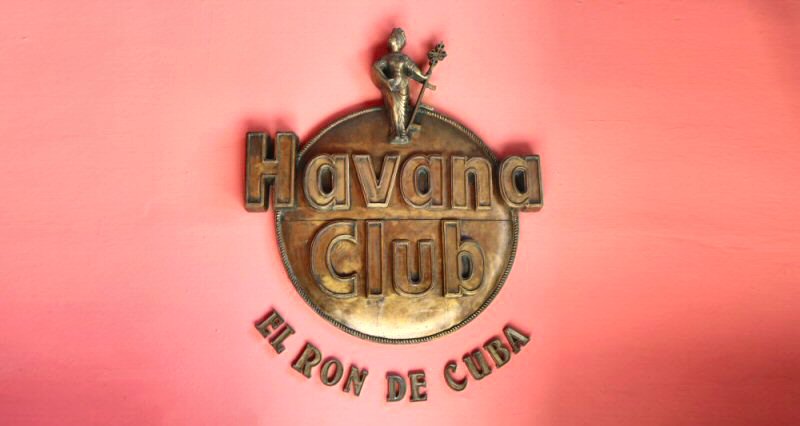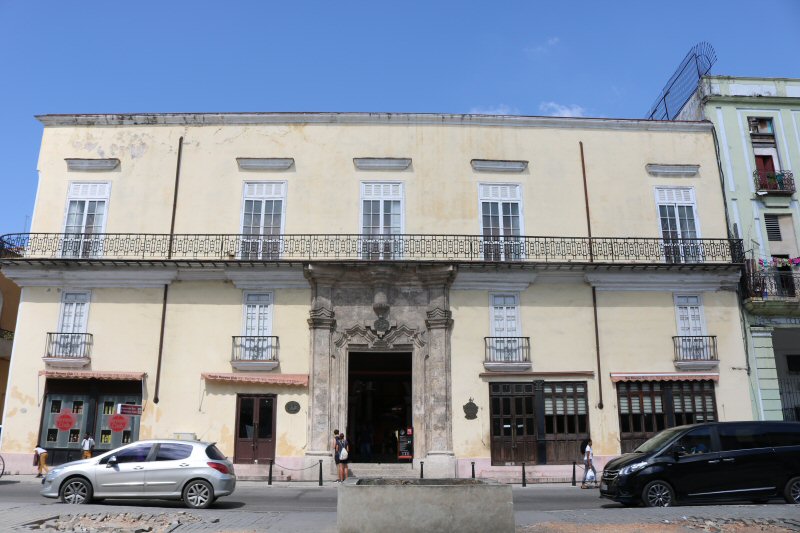
Ron Havana Club is not produced in
this building, but the main attraction of the place is to
give information to the visitors about the historical
development of the worldwide known rum factory by offering a
real-time experience of the rum-making process in sequential
order at first hand.
HISTORY
The building was built in the period
of 1772 and 1780, and its first owner was the couple Don
José Fajardo Covarrubias and Doña Josefa Montalvo, a
renowned family of the Havanan society of the time. Their
son, the wealthy coffee grower Don Juan Fajardo Covarrubias
y Montalvo, decorated the house with beautiful mural
paintings. The second bishop of Havana, Juan José Díaz de
Espada y Fernández de Landa or just Bishop Espada
(1756-1832), rented the building to convert it into
Episcopal Palace, and made some changes in it. Twenty years
later the building passed again to the hands of its former owner,
in whose time the roof with tiles were replaced by the flat
roof and the wooden balcony railings with the iron one. In
1892 the mansion was bought by Don Ramón de Herrera, a
wealthy Spaniard that held the title of Third Count of the Mortera. He installed the offices of his company Compañía
Naviera in the building. After the republic, the offices of
different companies and commercial firms occupied the
building, but the ownership of the Count of La Mortera
continued until the revolution in 1959. After the revolution
it became the property of the state and it served as Mambisa
Navigation Company (1961), Academy of Sciences (1965), and
National Council of Culture (1968). In 1990, after a
restoration in that all the additions that were undermining
the original image of the building, were removed, it was
handed over to the Ministry of Culture under the name of
House of the Young Creator, dedicated entirely to cultural
purposes. Since 2000 it is the Havana Club Rum Museum.
The building has an impressive
entrance and a spectacular patio that has two arches at both
sides, supported by broad stone columns. The area is
enriched by rich vegetations, such as ferns, yuccas and
potted palms. The building is decorated in authentic and
classic style. It has wide arches, strong columns, high
strut and wide walls.
The Museo del Ron Havana Club is
located on the Avenida del Puerto #262, at the corner of the Sol
street, 70 meters to the Terminal de Ferris.


The history of sugarcane begins with the
Austronesian and Papuan people that live in an area extending
from Madagascar in the west to the Papua New Guinea in the east,
including Taiwan, Indonesia, Philippines, Polynesia and Malay
Peninsula. In the prehistoric times, this ancient crop was
spread via Austronesian sailors. It was introduced to the
southern China and India by the same way around 1.200 to 1.000
BC. Sugarcane was used primarily as animal food for domesticated
pigs.
The earliest known use of sugarcane in the
production of crystalline sugar began in India between the 6th
and 4th centuries BC. The Persians encountered its value and
started with its agriculture. The Arab merchants began to sugar
trade from India, so that the sugarcane-based sugar production
spread to the Mediterranean, Mesopotamia, Egypt, North Africa
and Andalusia.
The sugarcane was brought to the Americas
by the Spanish from the fields in the Canary Islands, and
by the Portuguese from the fields in the Madeira islands. It
was Christopher Columbus that first brought sugarcane stalks
from the Canary Islands to the Americas during his second
voyage. He brought them initially to Hispaniola (today’s
Dominican Republic and Haiti) and then to other regions of
the Americas, including Cuba.
In colonial times sugar (often in the
form of molasses) was shipped from the Caribbean to Europe
or New England, where it was used to make rum. The profits
from the sale of sugar were then used to purchase
manufactured goods, which were then shipped to West Africa,
where they were bartered for slaves. The slaves were then
brought back to the Caribbean to be sold to sugar planters.
The profits from the sale of the slaves were then used to
buy more sugar, which was shipped to Europe.
Sugarcane easily adapted to Cuba’s
climate and soil and acquired a unique aroma that
distinguishes it from other sugarcane grown in other places
making it the prime and irreplaceable material in rum
making. Havana Club is a brand of Cuban rum, established in
1878 by the Spanish José Arechabala Aldama. It is considered
one of the best rum brands in the world. Its factory is
located in the municipality of Santa Cruz del Norte,
province of Mayabeque, east of Havana. It was nationalized
in 1960.

